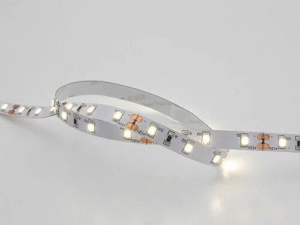The Future of Smart Lighting in Homes

As technology continues to shape modern living, lighting has evolved from a simple necessity into a dynamic part of home design and comfort. Gone are the days when lights were just switches on the wall — today, smart lighting systems are transforming how we experience illumination in our homes.
Smart lighting combines innovation, energy efficiency, and convenience to create personalized environments that adapt to our routines and moods. Whether you’re looking to enhance comfort, improve energy management, or elevate your home’s aesthetic, smart lighting represents the next big step in intelligent living.
What Is Smart Lighting?
Smart lighting refers to advanced lighting systems that can be controlled remotely or automatically through mobile apps, voice commands, or integrated home automation. These lights often use LED technology, which already provides superior brightness and energy efficiency, and pair it with smart connectivity features.
With smart lighting, you can adjust brightness, color temperature, LED Module and even light color with a few taps on your smartphone. Some systems learn your habits over time, automatically turning lights on when you enter a room or dimming them as bedtime approaches.
This combination of intelligence and flexibility has made smart lighting one of the fastest-growing trends in modern home design.
The Rise of Intelligent Home Design
As homes become more connected, lighting plays a crucial role in shaping how people interact with their environment. Smart lighting fits perfectly within this movement by offering both function and emotion — it’s practical for daily activities and capable of creating beautiful atmospheres with ease.
For example, homeowners can set different “scenes” for different occasions — bright light for cooking, warm tones for dining, or soft hues for watching a movie. Smart lighting can even synchronize with music or entertainment systems, turning living rooms into immersive, dynamic spaces.
By combining aesthetics with technology, smart lighting turns an ordinary house into a responsive and inspiring living space.
Energy Efficiency and Environmental Benefits
Smart lighting isn’t just about luxury — it’s also about sustainability. LED-based smart lights consume significantly less energy than traditional bulbs and last much longer. When combined with smart controls such as motion sensors, timers, or dimming functions, energy usage becomes even more efficient.
For example, lights can automatically switch off when rooms are unoccupied or adjust their brightness based on natural daylight levels. This intelligent energy management not only reduces electricity bills but also supports eco-friendly living by minimizing waste and carbon emissions.
In a world where sustainability is increasingly important, smart lighting provides a simple yet powerful way to live responsibly without compromising comfort or style.
Personalization and Mood Control
One of the most impressive aspects of smart lighting is its ability to influence mood and atmosphere. With adjustable color temperatures and color-changing options, homeowners can design lighting that fits every emotion or occasion.
Cool white lighting boosts concentration during work hours, while warm tones promote relaxation in the evening. Many smart systems also include circadian rhythm features — adjusting the light’s color and intensity throughout the day to match natural sunlight patterns. This not only enhances comfort but also supports better sleep and overall well-being.
The result is a living environment that feels more in tune with your body’s natural rhythm and emotional needs.
Convenience Through Automation and Voice Control
Smart lighting systems integrate seamlessly with modern technology such as smartphones, tablets, and voice assistants. You can control every light in your home using apps or voice commands — no more searching for switches or dimmers.
With automation features, lights can be scheduled to turn on before you arrive home, gradually brighten as you wake up, or switch off automatically when you leave. These hands-free features make daily living more convenient, especially for families with busy schedules.
In addition, remote access means you can manage your home lighting from anywhere, providing security and peace of mind when traveling.
Enhanced Safety and Security
Lighting is also an essential part of home security. Smart systems can simulate occupancy by turning lights on and off randomly while you’re away, deterring potential intruders. Motion-activated outdoor LEDs add another layer of protection by illuminating dark areas around your home.
Furthermore, emergency lighting features can ensure hallways and exits are automatically lit during power interruptions or nighttime activity. This blend of comfort and safety makes smart lighting a reliable partner in modern home management.
Conclusion
The future of smart lighting lies in its ability to blend innovation, efficiency, and emotional intelligence into everyday living. It allows homeowners to enjoy greater convenience, improved sustainability, and customized ambiance at the touch of a button — or even through simple voice control.
As technology continues to advance, smart lighting will only become more intuitive and accessible, shaping homes that are not just well-lit but truly alive. With its balance of beauty, intelligence, and practicality, smart lighting represents a future where every light serves both purpose and personality.
